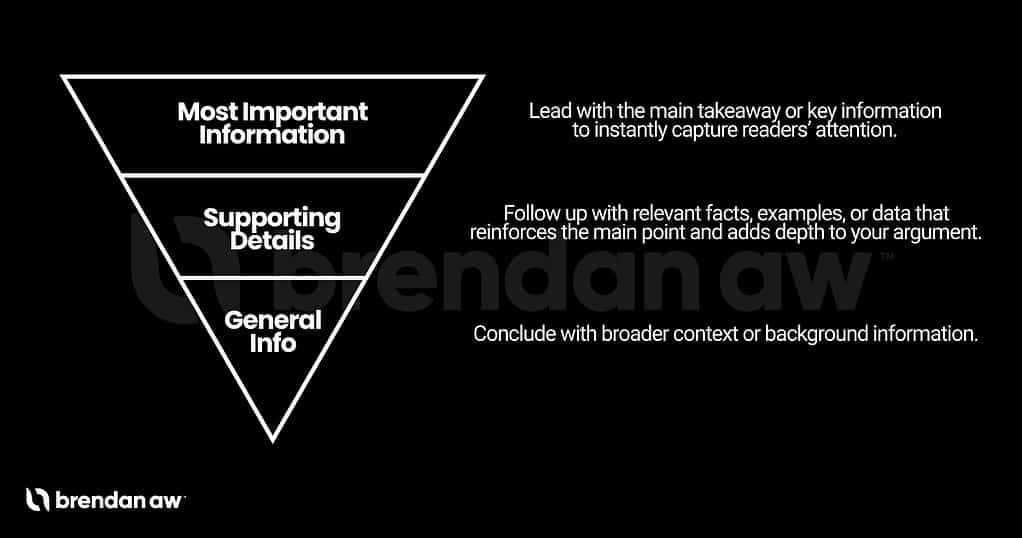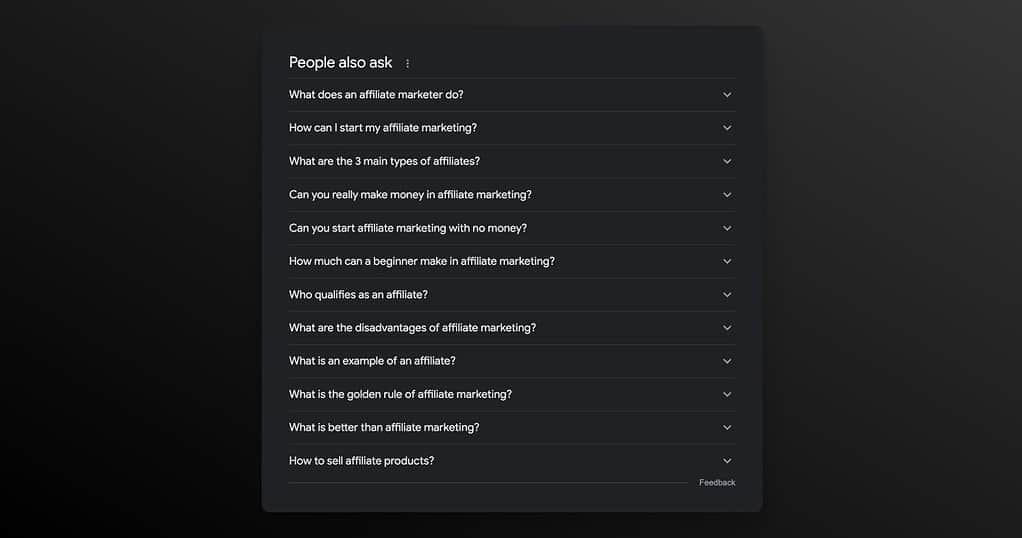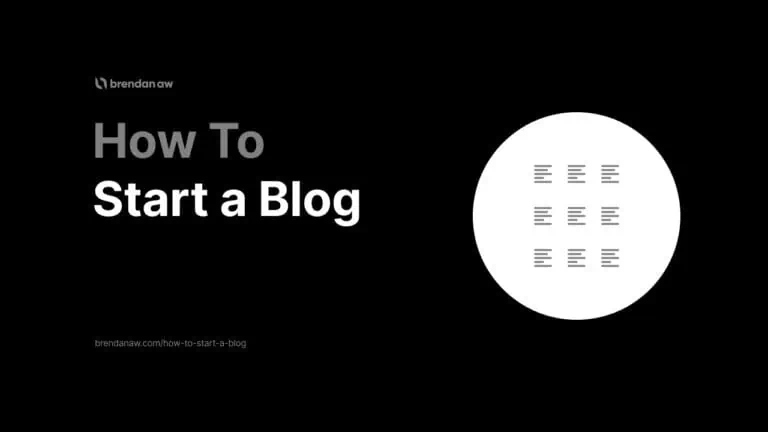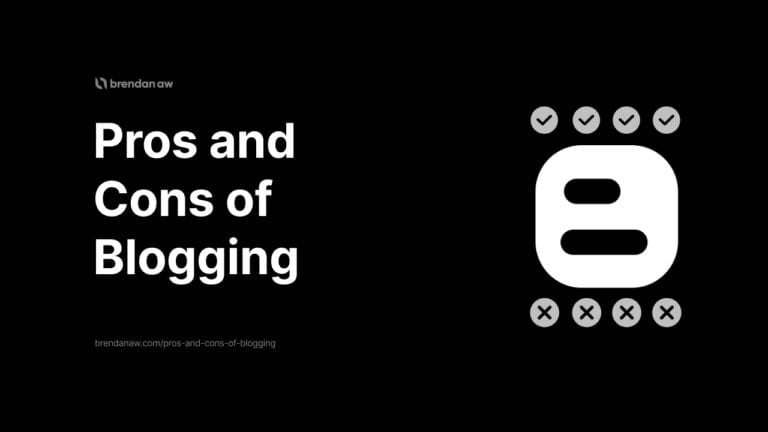Is your cursor hovering over the “publish” button?
Before you get too excited about sharing it…
STOP.
With the accessibility of AI writing tools, there’s no shortage of blog posts.
But most don’t get ranked.
Follow this ultimate blog post checklist to engage your readers and appease the search engine gods.
It’s a simple framework that ensures you get the most value from your hard work.
Are you ready?
Let’s go!
What blog post items to check before publishing?
Here are the 11 things you must check before publishing your next blog post.
- Understand Your Target Audience
- Hook the Reader
- Outline Your Post
- Answer The Search Intent Immediately
- Word Count Counts, But It’s Not What You Think
- Engagement Formatting
- Write it Like You Wrote it
- Basic SEO Best Practices
- Add a CTA
- Facilitate Social Sharing
- Review It
1. Understand your target audience
Identifying my audience has become second nature now.
Who are they? What are they looking for? What value can my experience provide?
Before writing a word, ask yourself the following:
- What is my reader’s search intent? This is where keyword research can be incredibly helpful. Keyword research helps you gain insight into the terms and questions your audience uses in search engines.
- What questions do they need answering? Anticipate and address the questions your audience might have. Think about common queries or pain points they might be facing.
- How can I end their search journey? Create comprehensive one-stop-shop content that answers initial questions and provides additional insight.
If you correctly identify the intended audience for your article, it has an all-around positive effect.
Readers will be likelier to share your content and navigate your site. Search engines love to see pages that end the search journey too.
Not only is it essential to consider your audience at the beginning, but it’s also important to remember your audience when you’ve finished writing.
I can’t tell you how often I’ve tapped out a few thousand words only to realize I had lost focus on my target message.
This is why I always have an SEO content brief for myself or freelancer writers.
ALWAYS keep your target audience in mind throughout your writing process.
2. Hook the reader
You can write the best blog post in history. But if no one clicks through, what’s the point?
When crafting my blog post titles, I keep these questions in mind:
- What makes my reader want to click?
- Would I click it? Why?
- Does my title create curiosity, desire, or fear?
This can all be tied back to not understanding your audience and further shows its importance.
If you get stuck, AI copywriting software can help generate optimized titles too.
But that’s not all…
Crafting a clickable title is only half the battle.
Once your readers are in, you must keep them engaged with a captivating introduction.
A great intro grabs attention, sets the tone, and provides clear direction for the rest of the blog post.
Consider doing these:
- Create authority with a personal experience
- Provide interesting or shocking statistics
- Pose a rhetorical question
- Use humor
Read my article on the best copywriting frameworks if you need some training wheels.
Your introduction needs to be short and compelling to incentivize readers to continue.
Attention is the currency of the internet.
It’s not enough to attract it. You must maintain it.
3. Outline your post
Can you imagine walking into a supermarket where none of the aisles are labeled?
Good luck trying to find anything…
Trying to navigate a blog post without a proper outline is no different. It leads to frustration and high bounce rates.
Outlining your post is important for setting expectations early. Readers can see exactly what they’re in for and skip ahead if needed.
Respecting your reader’s time goes a long way.
Having a clear outline can also score you some search engine brownie points and can help you get the featured list snippet, which is excellent for traffic.
The good thing about outlining your post is the simplicity.
Just identify the major headings and hyperlink them to their relevant sections – exactly like I did at the start of this article.
Both Google and your readers will love you if you do it.
4. Answer the search intent immediately
Have you ever searched how to make some dish and had to scroll through 2000 words of rubbish before getting to…
The actual recipe?
I think we hate that.
Deliver value upfront, and then use the article to expand on this answer and the evidence for it.
This technique is commonly referred to as the “inverted pyramid” style of writing and is commonly used by journalists.
It’s well suited to us bloggers too.
This approach respects the reader’s time and establishes your credibility right from the start.
Prioritize your audience’s needs, and they will give you trust.
5. Word count counts, but it’s not what you think
We could argue all day about the perfect-length blog post.
But the truth is… there isn’t.
John Muller, a search advocate for Google, has said:
“From our point of view, the number of words on a page is not a quality factor, not a ranking factor.
So just blindly adding more and more text to a page doesn’t make it better.”
John Muller
You can watch the full interview here.
But why should it be a blog post checklist item?
Because it tells you how comprehensive your article must be by comparing it to the top articles on page one.
You’ll find that 2000 words answer many more readers’ questions than 500 words.
It’s a matter of quality and depth. Not quantity.
So before posting your next blog post, look at your competitors’ word count.
And before you start stuffing words in to make the count, ensure they’re valuable.
A great way I’ve found to lengthen an article while still adding value is using the ‘People also ask’ menu on Google’s SERP.
Keep opening the Accordions to show more relevant questions.
This is also an excellent opportunity to target long-tail keywords that weren’t viable in the body.
6. Engagement formatting
Imagine reading a block of text that goes on forever. It’s like trying to read the Matrix code.
Engagement formatting is key for turning a bland blob of text into a visually appealing and engaging piece.
It helps keep readers’ attention and makes them continue.
Here are some easy formatting tips for implementing before you hit publish:
- Keep your paragraphs short: One or two sentences and straight to the point.
- Use lists: People love lists. They’re a quick and easy way to convey information.
- Use media: A well-placed image or video to illustrate a point can add significant value to your article.
- Use the right headings: Create a logical hierarchy with your H1, H2, and H3 tags and make it easier for both the reader and search engines to understand your content.
- Use strong text: A.K.A bold text helps the reader and crawlers identify key pieces of information.
Create your articles with these engagement formatting tips to streamline skimming for readers.
7. Write it like you wrote it
Catchy title, huh? I just made it up… and that’s the point.
AI Content is overly used by most.
There’s something refreshing about an article that feels personal and genuine.
Here are some great ways to inject some personality into your writing:
- Speak their Language: Gone are the days of fancy corporate language in blogging. Adopt a conversational tone like you’re having a chat with a mate. Don’t shy away from lingo your audience is familiar with.
- Get personal: Sharing a personal story or experience not only adds depth but also creates an emotional connection. The best part? It’s uniquely yours. No AI can replicate your experiences.
- Have a laugh: A well-placed joke or clever wordplay can keep your audience engaged and entertained. Just be sure to use it wisely, as it can detract from your core message.
Google may not penalize AI-generated content, but that is not a green light to abuse it.
People connect with people. So write it like you wrote it.
If you are paranoid about your content being flagged, I suggest trying out some AI detectors.
8. Basic SEO best practices
SEO (Search Engine Optimization) is the three little letters that can make or break your online presence.
It warrants an entire topic cluster.
But here are some quick best practices you can implement before hitting that publish button:
- Check your URL slug: Make sure the slug is simple and evergreen – avoid using dates or numbers in your slug. This means the article can be extended later and won’t be dated after a year.
- Add Alt Text to images: Don’t forget it. Google will love you.
- Internal linking: Use internal linking to build a spider web and spread link juice throughout your site. AI tools like Link Whisper are invaluable for increasing topical authority and building solid internal links.
- External linking: External links to high-DR websites are an easy way to add credibility to your blog post.
- Meta description: A well-crafted meta description is like the blurb on the back of a book. It should be informative and contain your focus keyword.
- Categorize your post: Categorizing your post properly helps organize your content efficiently, which is beneficial for site structure and is also SEO gold. Place your post in the right section.
Without proper SEO, even the best content can fall flat.
I’ve only just touched on some basic on-page SEO here.
There are also content and technical SEO aspects worth considering too.
Implement these basic practices into your next article and brace for traffic.
9. Add a CTA
A Call to Action (CTA) encourages your readers to take further action.
Don’t assume readers will do what you want. I don’t want to be mean…
But treat readers like idiots. You have to tell them EXACTLY what to do.
Whether subscribing to a newsletter, buying a product, sharing your content, or following internal links, CTAs are necessary for your blog post.
A well-crafted CTA converts your passive readers into active participants. I tend to implement direct response copywriting techniques to increase conversions, even in my blog posts.
These are usually found toward the end of the article (but not always).
Remember to make them:
- Clear
- Concise
- Identifiable
Don’t be scared to create a sense of urgency and gently nudge your audience toward the action you want them to take.
So next time you hit publish, don’t just let your content sit there.
Have follow-ups.
10. Facilitate social sharing
We humble bloggers can often overlook the power of social media.
One simple share of your blog post by the right X account could skyrocket your blog traffic.
If you want to grow your brand with social media, here’s how I like to make it simple for my readers to share my content.
- Add social share buttons: Ensure that social share buttons are easily accessible on your blog post. Preferably at the top, bottom, or as a floating sidebar. Mine is on the left on desktop and at the bottom on mobile.
- Craft shareable content: Make your content so good that readers can’t help but share it. Add quotable snippets, high-quality images, or intriguing data that people love to share.
- Encourage sharing: Sometimes, all you need to do is ask. Encourage your readers to share the post with their networks.
When readers share your content, it not only builds traffic. But it helps to build a community around your blog.
Look at each share of your content as an endorsement by someone who found your content valuable enough to put their name behind it.
Make it easy!
11. Review it
You’re so close to crossing the finish line now, but hold off on hitting the publish button a little longer.
The final review is where you can put a final polish on your blog post.
Here are a few final checks to make it shine:
- Fact-check: Small errors or inaccuracies can hurt your credibility. If you’ve made any bold statements are you able to back them up with a high-quality external link?
- Proofread: Review your post to ensure it’s free from spelling and grammar errors. Use Grammarly.
- Test your links: I always like to test all my links – and I mean all of them. There’s nothing more frustrating than clicking on a link that leads to a 404 error. Ensure all your internal and external links work and open in the appropriate tabs.
- Use a blog post checklist: Kinda like this one! Remembering all this stuff is hard. Save this article to your favorites bar and give it a quick peruse when writing blog posts.
Publishing your blog isn’t the end of the content creation process. You’re also going to need to update for SEO in the future.
A well-reviewed blog post is more likely to succeed, so give it a good last-minute check-over and make the most out of your hard work.
What is a blog post checklist?
A blog post checklist is a tool you can use to make sure you’ve got everything covered before hitting publish. It’s a list of essential steps and considerations to remember from the inception to the publication of your blog post.
This includes identifying your audience, crafting engaging titles, optimizing for SEO, formatting, adding internal and external links, and final review processes.
Essentially, a blog post checklist is a roadmap that ensures you don’t miss any critical elements contributing to each article’s quality and effectiveness.
Why should you use a blog post checklist?
Using a blog post checklist is one of the essential tools when starting a blog.
It helps you:
- Maintain consistency
- Adhere to SEO best practices
- Save time and mental energy
Let’s dive deeper.
1. Streamlines the process
A blog post checklist helps streamline the blogging process.
With a clear set of steps, you can move through the stages efficiently, ensuring you don’t miss or skip any crucial aspects.
Take a note from Henry Ford and put your blog posts on an assembly line.
2. Enhances Quality
It acts as a quality control tool. By systematically going through the checklist, you can enhance your blog posts’ accuracy, readability, and overall quality.
Using a blog post checklist will add uniformity to your written content too.
3. Saves Time
Time is money, and a checklist helps you save it.
Having a clear structure prevents you from wondering what to do next or revisiting steps you might have missed.
A good blog post checklist improves productivity by giving you a clear list of tasks to complete before publishing.
4. Builds Consistency
Consistency is key in blogging.
A checklist ensures that all your blog posts maintain a consistent structure and quality, which helps build your brand.
This structure helps you score brownie points with the search engine gods too.
5. Reduces Stress
Having a checklist reduces cognitive load. It’s reassuring to know that you have a structured plan to follow, which makes the process less daunting and more enjoyable.
Instead of waking up in the middle of the night when you remember you forgot to include alt tags on your images, use a blog post checklist and sleep easy.
Blog Post Checklist (FAQs)
How Do I Ensure That the SEO of My Blog Post Is Effective?
Start by satisfying all the items on this blog post checklist article. If you are using WordPress, use an SEO-friendly plugin like Rankmath to automate the process and an on-page SEO tool like NeuronWriter to further enhance your article using AI.
How Does a Link Contribute to My Blog Post?
Internal links add context and ease of navigation for web crawlers and readers. External links act as votes from other sites that add credibility to your blog posts. Both of which are essential SEO best practices that will increase your overall traffic and domain authority.
What Is the Importance of a Great Headline in My Blog Post?
The headline is the first thing users see in the search results, and you won’t get a click if it’s not compelling enough. Which means you just wasted your time writing the blog post.
What Makes a Blog Post Complete?
A complete blog post needs a great headline, well-written and informative content, links, infographics, a compelling call-to-action, and good SEO. Always have a checklist to help you ensure that every part of your post is perfect before you publish your blog post.
What Is the Importance of the Title Tag in SEO?
The title tag is a crucial component of SEO. It’s essential to ensure the title tag is descriptive and includes your primary keyword. Think of it as your article’s “name-tag” in search results. It helps Google understand what the blog post is about to rank it effectively.
How Can Adding Infographics Enhance My Blog Post?
Infographics help break up the content volume and make your post visually appealing. They make it easier for readers to understand complex information. Also, well-designed infographics can drive social media posts as they are highly shareable, bringing more traffic to your website.
How Can I Optimize My Images for SEO Before Posting My Blog?
Large images can slow down your site, so use a tool like ShortPixel to optimize each image on autopilot. Also, use descriptive file names, including keywords, whenever possible (but don’t stuff).
Alt text is also essential to make sure search engines and visually impaired users can understand what the image is about. This will give you a higher chance of ranking in image searches.
How Do I Check if My Blog Post Is Ready To Be Published?
Go over the entire blog post checklist I’ve mentioned above.
To Sum Up
A blog post checklist is a powerful tool for checking your written content before publishing and helping ensure a successful blog post is written.
By following the steps here, you can be sure your article is targeted appropriately, structured correctly, and polished to a professional standard.
The readers will appreciate it, and so will the search engines.
That’s it for now.
I hope you found some actionable items on this checklist!
Save it to your favorite bar and use it next time before you hit publish – I’ll bet it saves you from forgetting something 😉.










